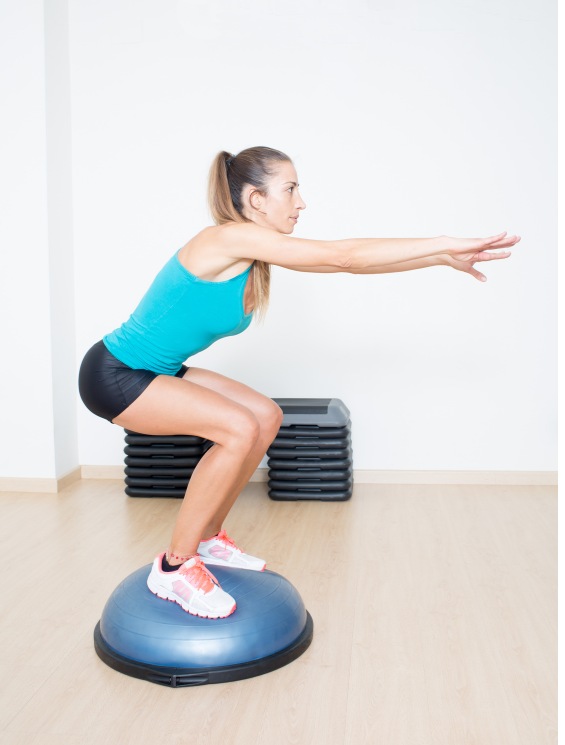Ligaments are short, tough, flexible bands of tissue that hold together two bones in a joint. The Anterior Cruciate Ligament (or ACL) is an important ligament that is structurally integral to the knee joint. Primarily it prevents the tibia (shin bone) from translating too far forwards in relation to the femur (thigh bone) when the foot is planted.

Full thickness ACL injuries to the knee are often catastrophic to an athlete’s season, and in some cases, their sporting career. Recovery times from this injury are usually long term – for most athletes 9-12 months of rehabilitation are required to return to sport. However, professional athletes may return to sport in shorter time than this. 80% of ACL injuries return to some form of sport post reconstruction, 65% return to the same sport, and only 55% return to sport at a competitive level 1-2 years post ACL reconstruction (Ardern CL et al, 2014). As a result of this, ACL injury prevention should be a key component of an athlete’s training regime.
A study by Anderson et al 2019, found that the risk of non-contact ACL injury in sports was increased in the early stages of the regular season when compared to preseason, middle of the competitive season and the end of the regular season. The study also found that the prevalence of non-contact ACL injury was increased prior to half time in the early stages of the season, but greater after half time in the later stages of the season. This is likely to be as a result of a direct link to muscular fatigue, which could be combated with a more focused training program designed by your physiotherapist.
Another study by Myrick et al 2019, has found that the ACL actually increases in thickness as a season progresses. This study found that in female soccer players the ACL grew in thickness by approximately 10%. This is likely as a result of increased muscular strength and fitness developed throughout the regular season. This could also be the reason why ACL injuries are less predominant in the later stages of the season. Increased ACL thickness is directly linked to a decreased prevalence of non-contact ACL injury.

There is evidence that strength training can also increase the thickness of the ACL. This was first seen in a study of the thickness of weightlifters’ ACLs via MRI (Grzelak 2012). This suggests that appropriate preseason strength and conditioning for athletes is key for the prevention of non-contact ACL injuries in the early stages of the season.

Consistently research today demonstrates that ACL injury prevention programs can’t eliminate the risk of all ACL injuries, but instead can significantly reduce the risk of ACL injury. A study by Webster & Hewett (2018) showed that 50% of all types of ACL injuries (contact & non-contact mechanisms, males and females) and 67% of non-contact ACL injuries in females, can be reduced with the regular implementation of ACL injury prevention programs. These ACL prevention programs involve the neuromuscular training of the quadriceps and hamstring muscles which have been proven to reduce ACL injuries in athletes. Programs such as the FIFA11+, which incorporates single leg squatting and nordic hamstring curl exercises have proven to be effective in reducing ACL injuries in athletes. However, correct technique and form are imperative to ensure these reductions in injury rates occur. An additional benefit of neuromuscular training programs demonstrate reduced risk of other types of lower limb injuries such as ankle ligament injury (40% reduced risk) and all other lower limb injuries (22% reduced risk) (Finch et al, 2016, Grimm et al, 2016).
For additional advice for ACL injury prevention and training contact your physiotherapist today!
- Ardern CL, Taylor NF, Feller JA, Webster KE. Fifty-five per cent return to competitive sport following anterior cruciate ligament reconstruction surgery: an updated systematic review and meta-analysis including aspects of physical functioning and contextual factors. Br J Sports Med. 2014 Nov;48(21):1543-52. doi: 10.1136/bjsports-2013-093398. Epub 2014 Aug 25. PMID: 25157180.
- Anderson T, Wasserman EB, Shultz SJ. Anterior Cruciate Ligament Injury Risk by Season Period and Competition Segment: An Analysis of National Collegiate Athletic Association Injury Surveillance Data. J Athl Train. 2019 Jul;54(7):787-795. doi: 10.4085/1062-6050-501-17. Epub 2019 Jul 19. PMID: 31322904; PMCID: PMC6709760.
- Myrick KM, Voss A, Feinn RS, Martin T, Mele BM, Garbalosa JC. Effects of season long participation on ACL volume in female intercollegiate soccer athletes. J Exp Orthop. 2019;6(1):12. Published 2019 Mar 28. doi:10.1186/s40634-019-0182-8.
- Grzelak P, Podgorski M, Stefanczyk L, Krochmalski M, Domzalski M. Hypertrophied cruciate ligament in high performance weightlifters observed in magnetic resonance imaging. Int Orthop. 2012;36(8):1715-1719. doi:10.1007/s00264-012-1528-3
- Webster KE, Hewett TE. Meta-analysis of meta-analyses of anterior cruciate ligament injury reduction training programs. J Orthop Res. 2018 Oct;36(10):2696-2708. doi: 10.1002/jor.24043. Epub 2018 Jun 13. PMID: 29737024.
- Finch CF, et al. Inj Prev 2016;22:123–128. doi:10.1136/injuryprev-2015-041667
- Grimm NL, Jacobs JC Jr, Kim J, Denney BS, Shea KG. Anterior Cruciate Ligament and Knee Injury Prevention Programs for Soccer Players: A Systematic Review and Meta-analysis. Am J Sports Med. 2015 Aug;43(8):2049-56. doi: 10.1177/0363546514556737. Epub 2014 Dec 1. PMID: 25451790.


